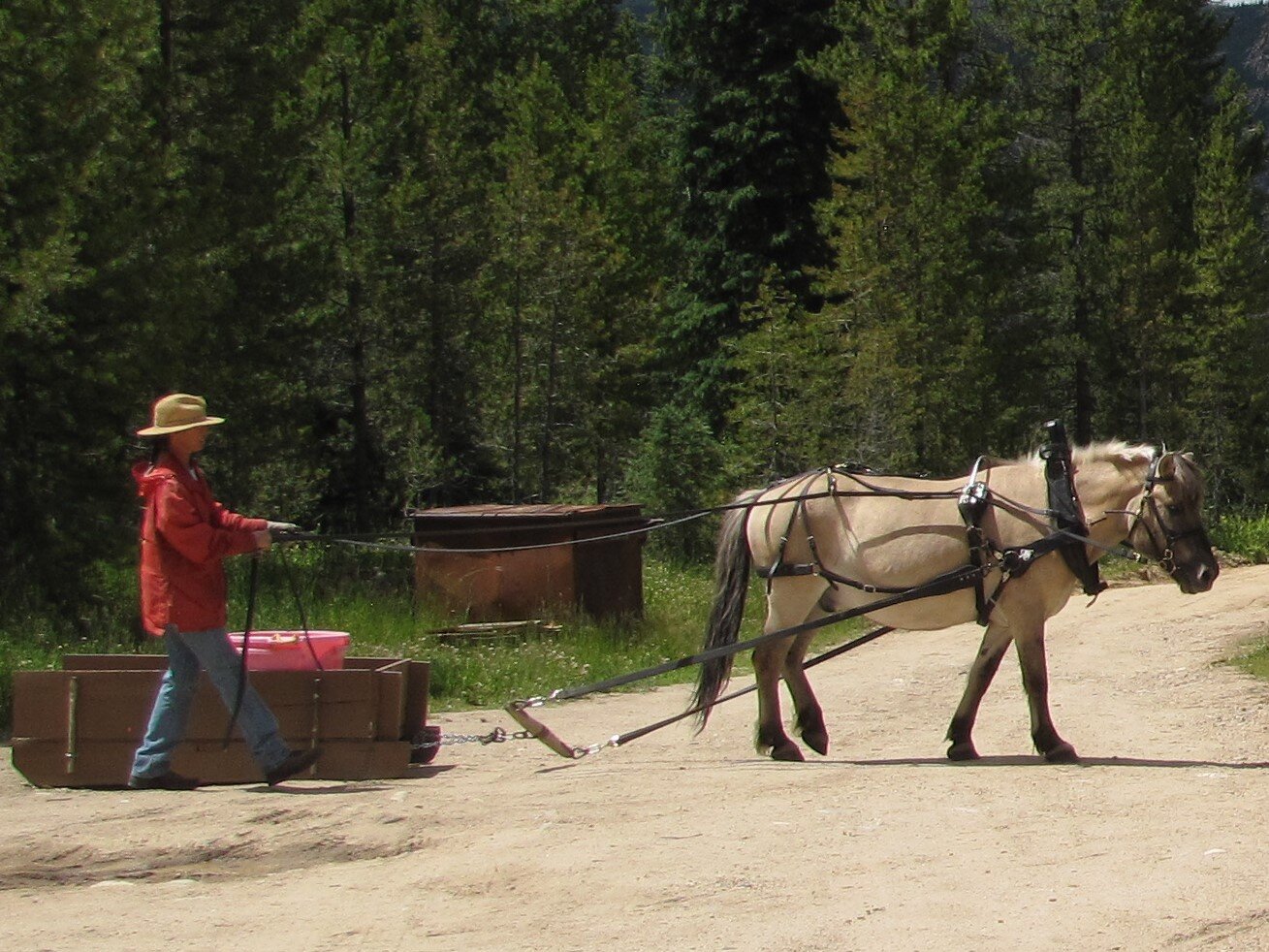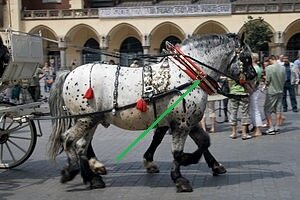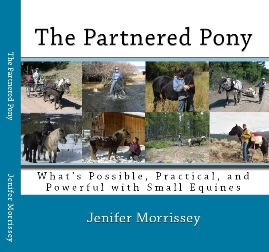I can easily imagine someone asking, “what the heck do the activities of the Partnering with Ponies 2025 Tribute have to do with the working heritage of our ponies?” Nothing and everything, it turns out! Click here for a link to an article I wrote for Rural Heritage magazine many years ago with the assistance of teamster Laura Masterson in Oregon. We called it “Ideas for the Off-Season.” It describes some of the activities in the Tribute and how they relate to her work with her team of work horses during her busy season.
Mya the Wonder Pony did a lot of work in harness and taught me a lot about working ponies. Here’s she’s skidding brush for a client of the logging business my late husband and I had.
Previously, I mentioned Warwick Schiller’s email titled “The Value of Allowing a No.” Since then I’ve been contacted by folks saying there’s other people besides Schiller that work towards yeses by allowing no’s. Yes! And isn’t that awesome! One clinician that was mentioned in particular is Kansas Caradine. Kansas spent many years working with horses in the traveling show Cavalia.
Libby Robinson who, like me, worked professionally with ponies, commented on my last post, “Your pony knows what you are saying and understands what you want; working together is in their blood.” How does work, day-in, day-out with ponies relate to the value of allowing a no? Because when you have a job to do, you can’t afford a pony saying “no, I’m not interested in doing that today.” Whether it’s Kansas Caradine in Cavalia or Libby in her varied work with ponies or me in the woods skidding brush and logs for a client, we need to know that our pony is truly our work partner. When clients pay you only upon completion of a job, you need to know that the pony you take to work with you is going to say yes all day until the job is done. And the way that you get to that sort of partnership is to realize, as Schiller suggested, that no’s can be ‘not yets’ and our ponies will help us understand how to get those ‘not yets’ to yeses.
At least in the line of work I did with my ponies, there was absolutely no way to expose them to all that might happen when we went on a job. Instead, it was really important that I have a strong partnership of work with my ponies. I developed that by showing up every day to do something with them. Many of the activities in the Tribute are ones that can be used to develop that kind of partnership in advance if we can’t prepare for jobs in other ways. I hope Tribute participants will use the activities to create and/or enjoy a deeper relationship with their ponies. One lifetime with them isn’t enough!








